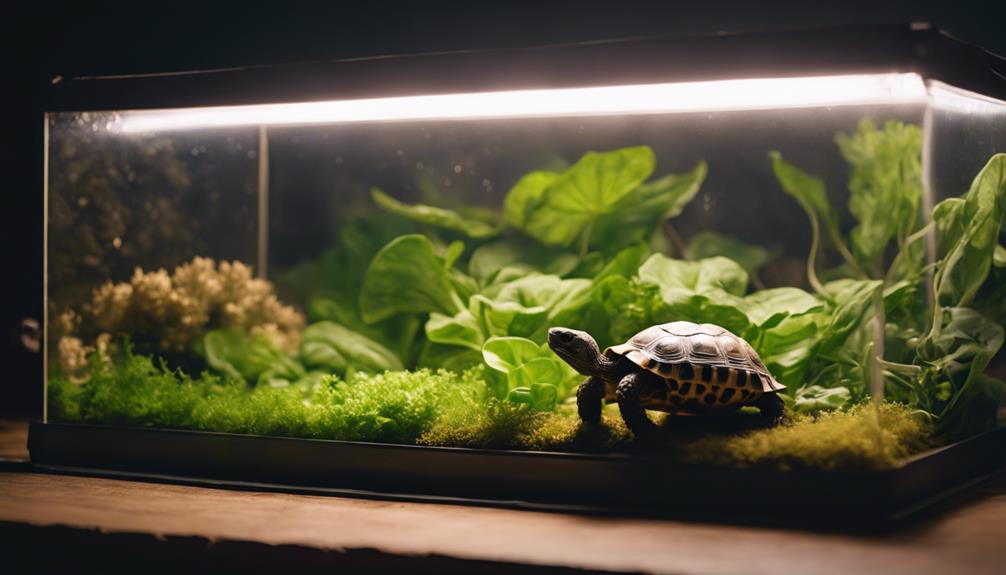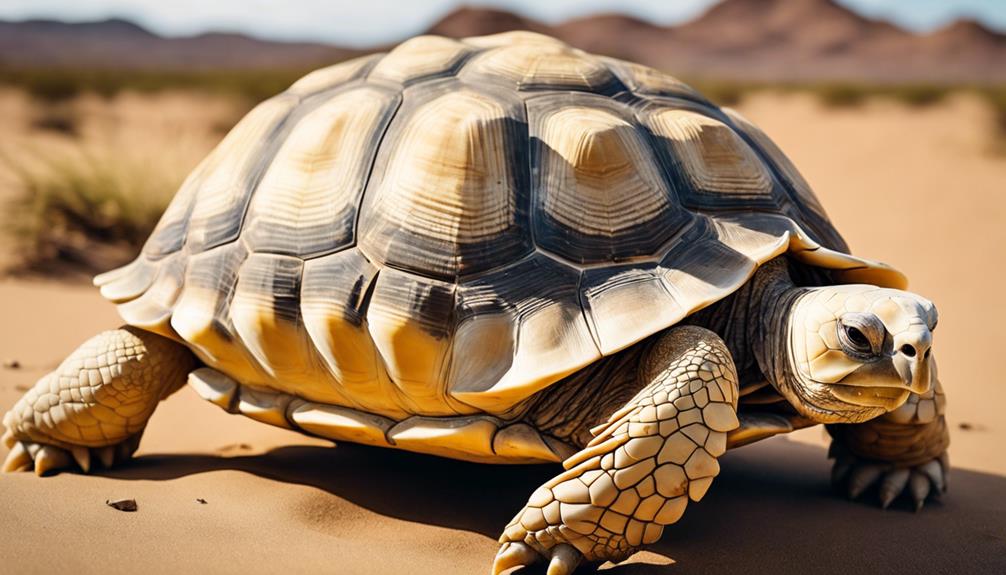When it comes to caring for Russian tortoise hatchlings, ensuring their well-being is like laying the groundwork for a sturdy house.
But before you rush into setting up their habitat, there are three key tips you must consider.
These guidelines will play a crucial role in nurturing these tiny creatures, setting them on the path to a healthy and thriving life.
So, let's uncover these essential care tips and help your hatchlings flourish from the start.
Key Takeaways
- Provide a warm, humid, enriched enclosure for optimal growth.
- Ensure UV lighting, basking spot, and hot humid hide.
- Offer a varied diet with calcium and vitamins.
- Monitor health, behavior, and shell condition regularly.
Enclosure Setup
When setting up the enclosure for your Russian tortoise hatchling, ensuring it provides the necessary warmth, humidity, and enrichment is crucial for their growth and well-being. For hatchlings, a small glass tank or Rubbermaid bin can be used, insulated to maintain warmth and humidity resembling their natural habitat. The substrate should consist of soil mixed with coconut coir, allowing them to burrow and find comfort within the enclosure. Adding enrichments like rocks, plants, and a water dish is essential for hydration and mental stimulation.
Proper UV lighting is vital for the health of Russian tortoise hatchlings. A basking spot should be maintained at around 95 degrees Fahrenheit to mimic the warmth they'd experience in the wild. Additionally, providing a hot humid hide within the enclosure offers a retreat for the hatchlings to regulate their body temperature and promote overall well-being. By creating an environment that meets these requirements, you can ensure the optimal growth and development of your Russian tortoise hatchling.
Nutrition Guidelines
To ensure optimal growth and development for your Baby Russian tortoise, it's essential to provide a varied and balanced diet following specific nutrition guidelines.
Offer a mix of leafy greens, weeds, and flowers to support their development. Incorporate hay and alfalfa into their diet to provide roughage and fiber for proper digestion.
Dry pellet food should be given in moderation as part of their balanced diet to meet their nutritional needs. Supplement their diet with calcium powder and vitamins like Nutrobal to support bone health and overall well-being.
Monitor their food intake closely to prevent overfeeding and obesity while ensuring they receive the necessary nutrients for healthy growth. By following these guidelines and providing a diverse diet rich in essential nutrients, you can help your Russian tortoise hatchling thrive and lead a healthy life.
Health Monitoring
Regularly monitoring the health of your Russian tortoise hatchlings is crucial to ensure their well-being and early detection of any potential issues. Signs of dehydration, such as sunken eyes or wrinkled skin, should be promptly addressed as they can indicate health concerns. It's essential to check the weight of your hatchlings regularly to track their growth and ensure they're receiving adequate nutrition.
Keep an eye out for respiratory issues like wheezing or nasal discharge, which may require veterinary attention. Inspecting the shell for abnormalities such as soft spots or pyramiding is important as these could be indicators of metabolic bone disease. Additionally, observing any changes in behavior, appetite, or activity levels in your hatchlings can help in identifying underlying health issues.
Conclusion
So, there you have it, aspiring tortoise whisperer!
Remember, keep that humidity high, those UVB lights shining bright, and those leafy greens coming. Your Russian tortoise hatchling will thank you by growing into a healthy and thriving adult.
Just a little TLC goes a long way in the world of tiny tortoises.
Keep up the good work, and happy tortoise parenting!


